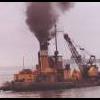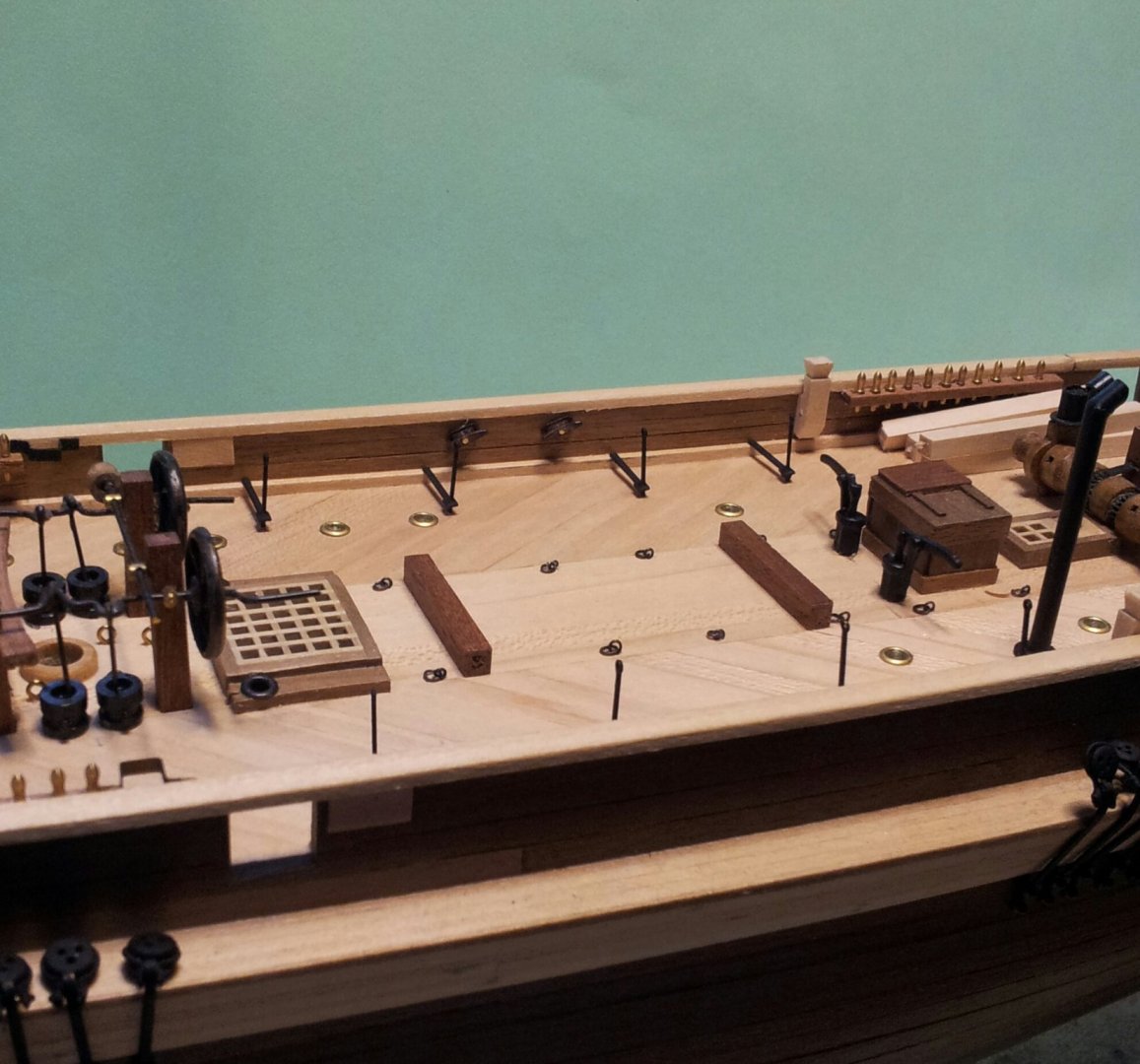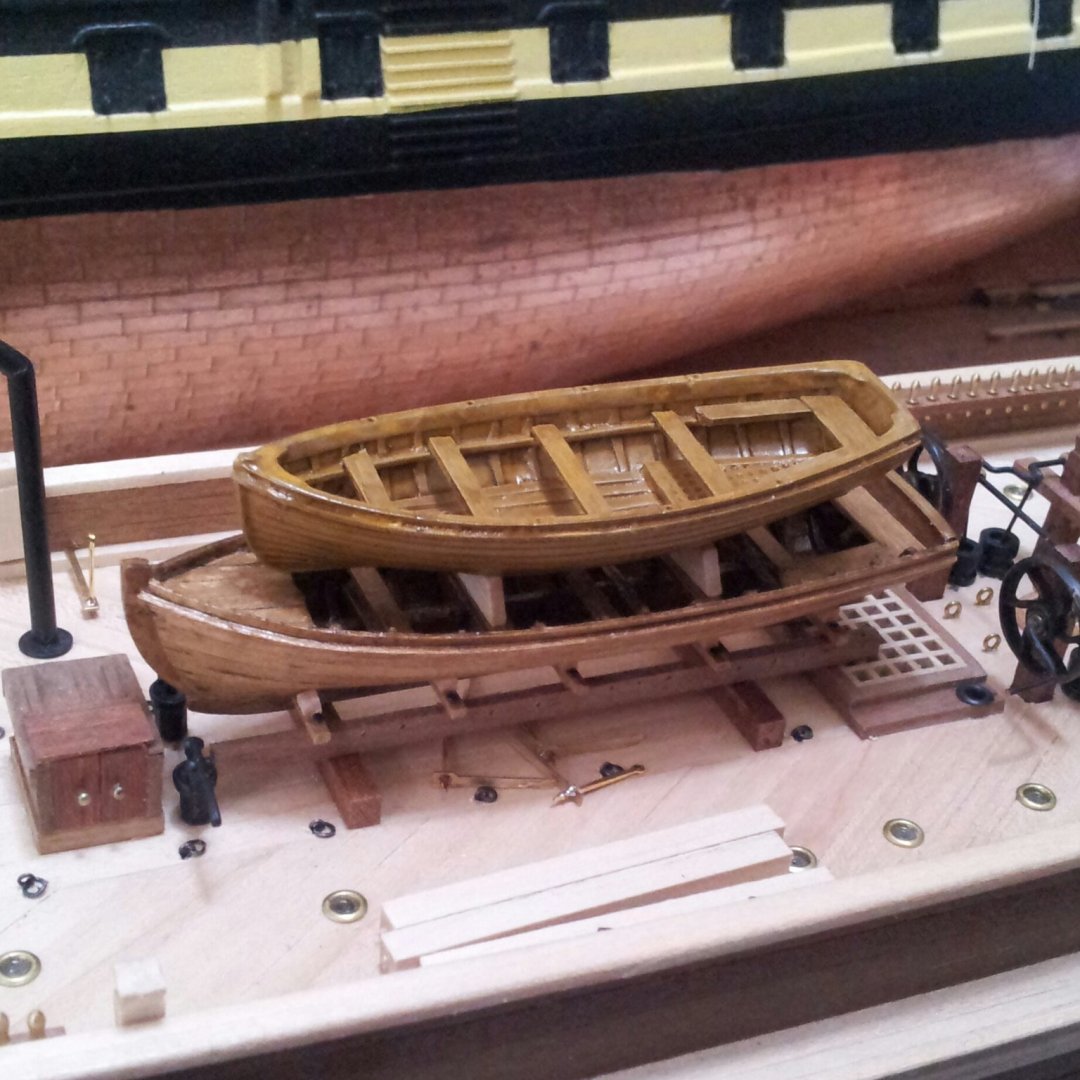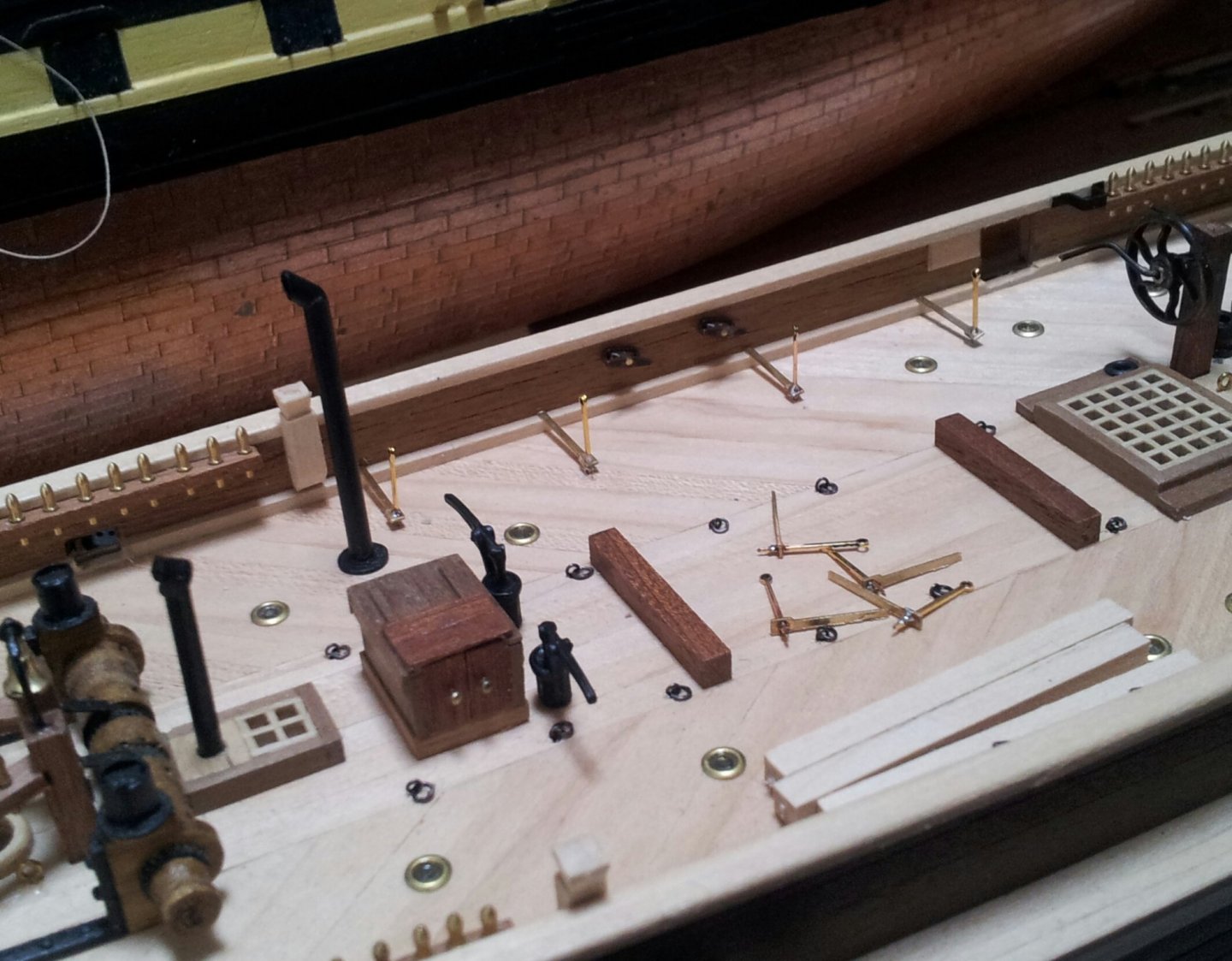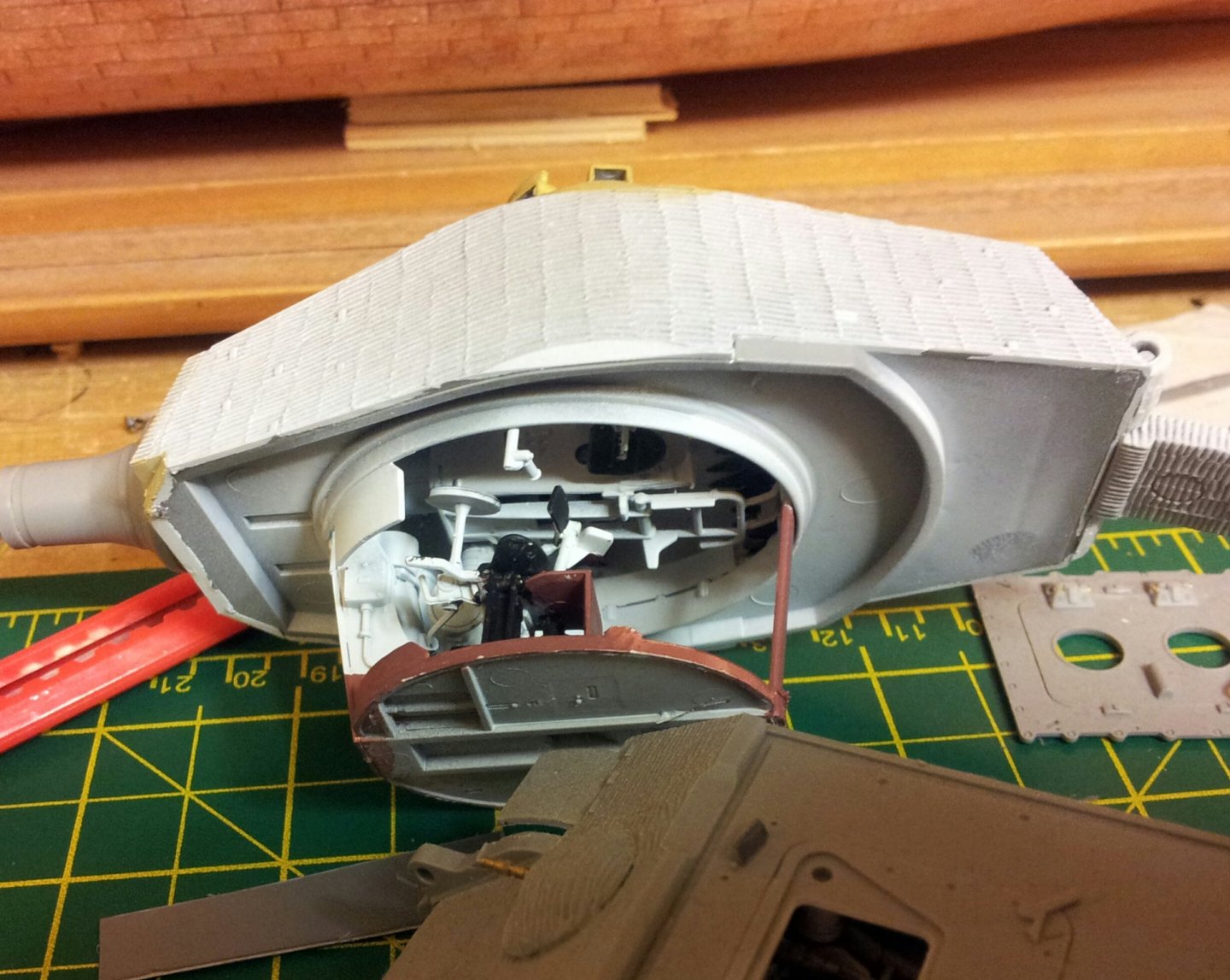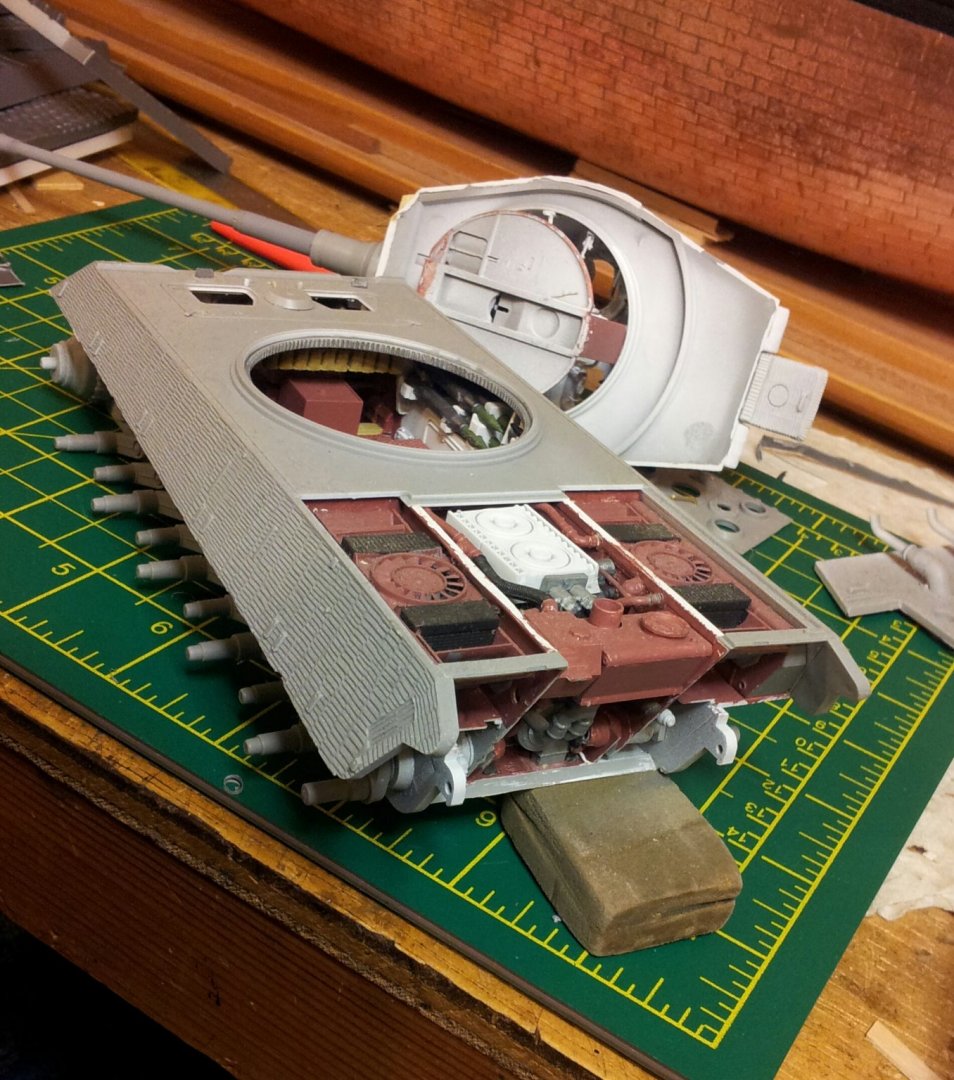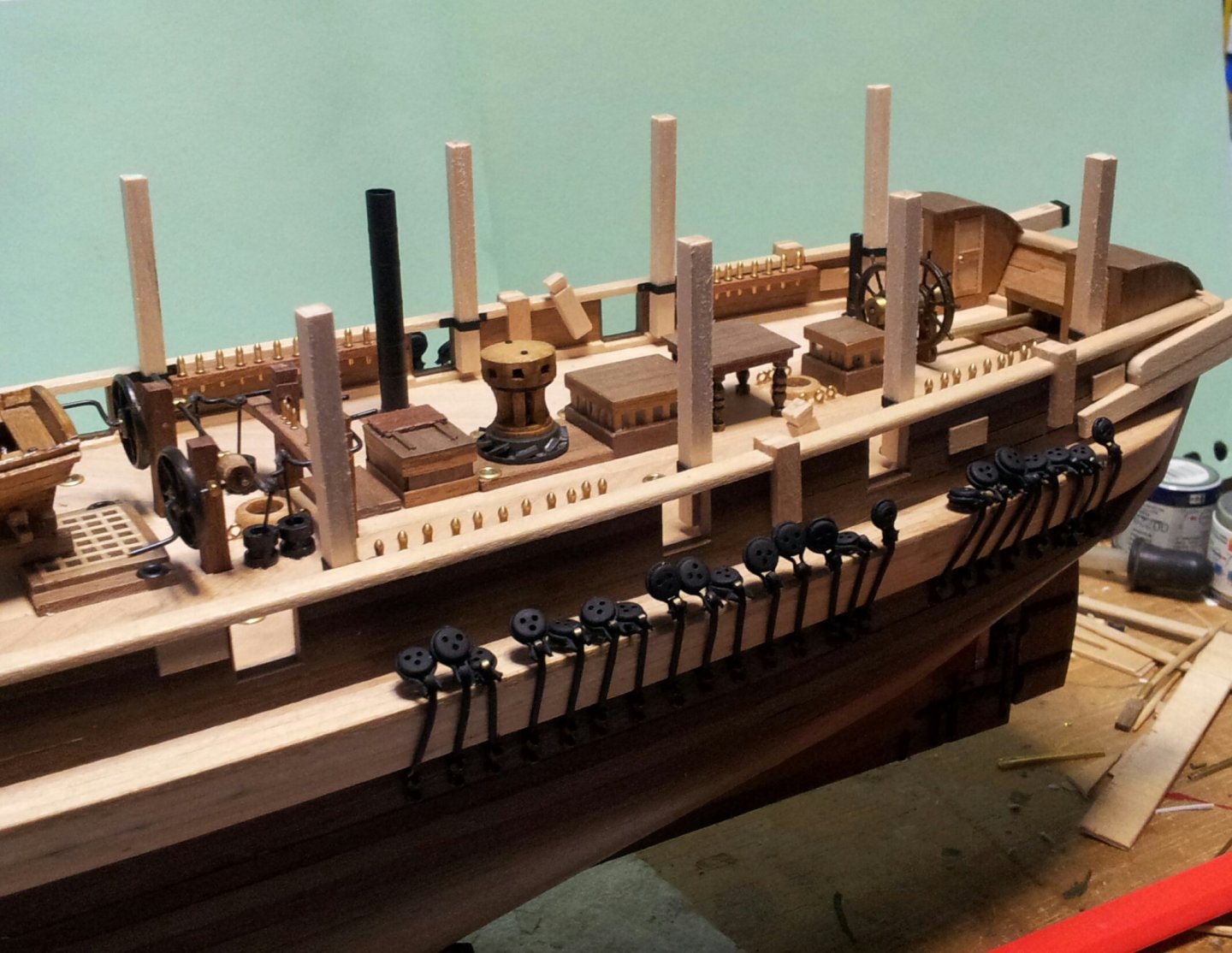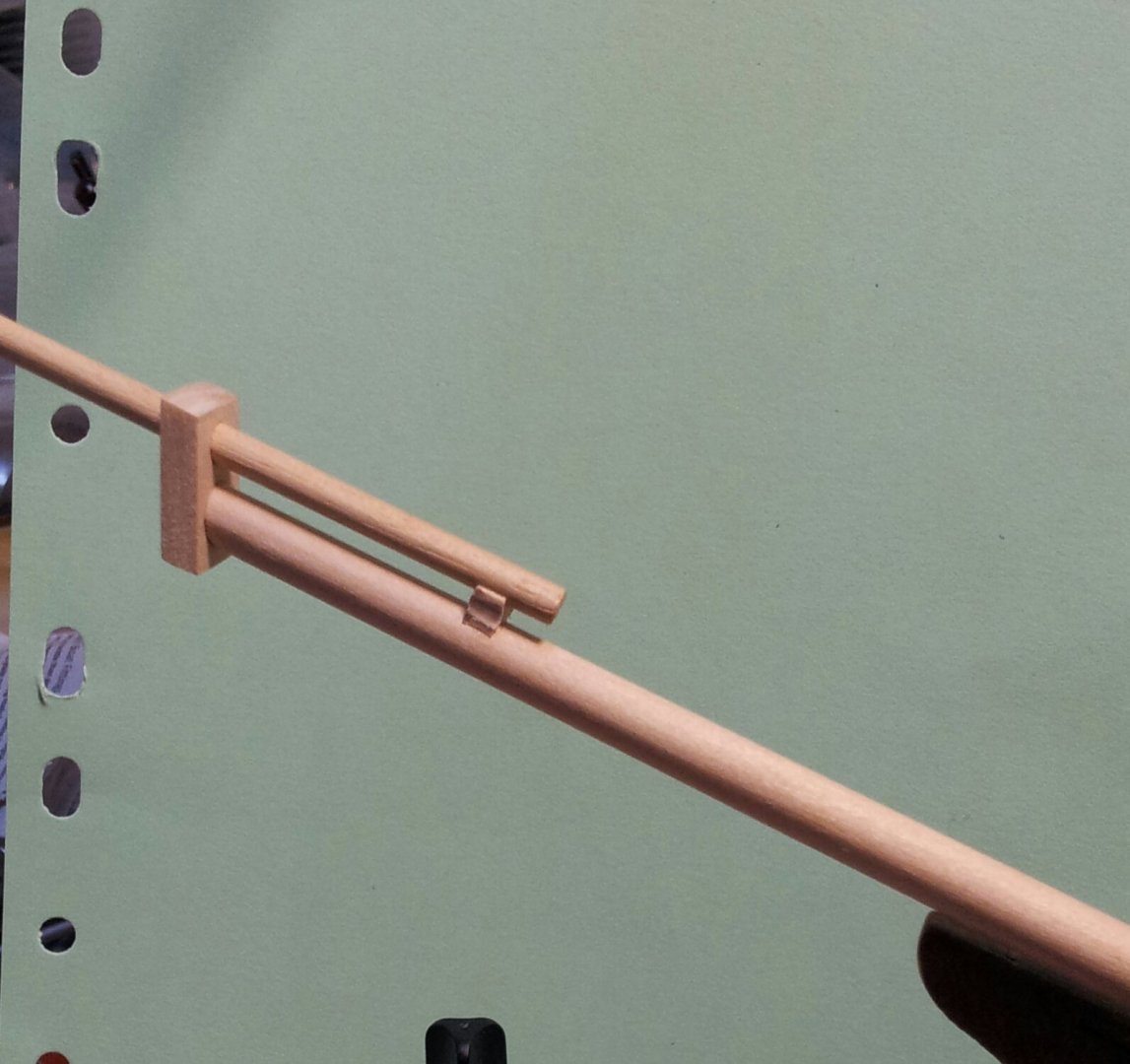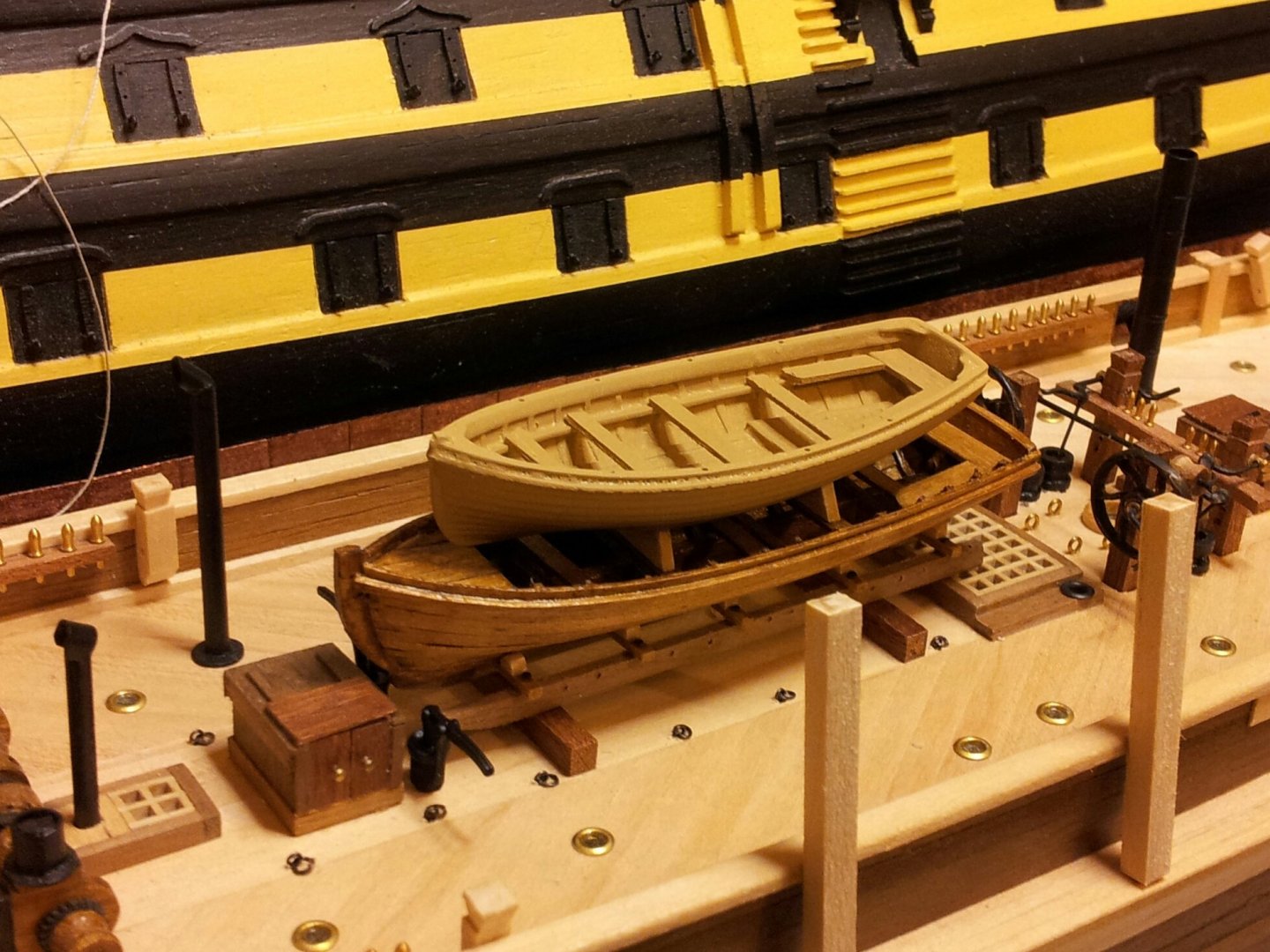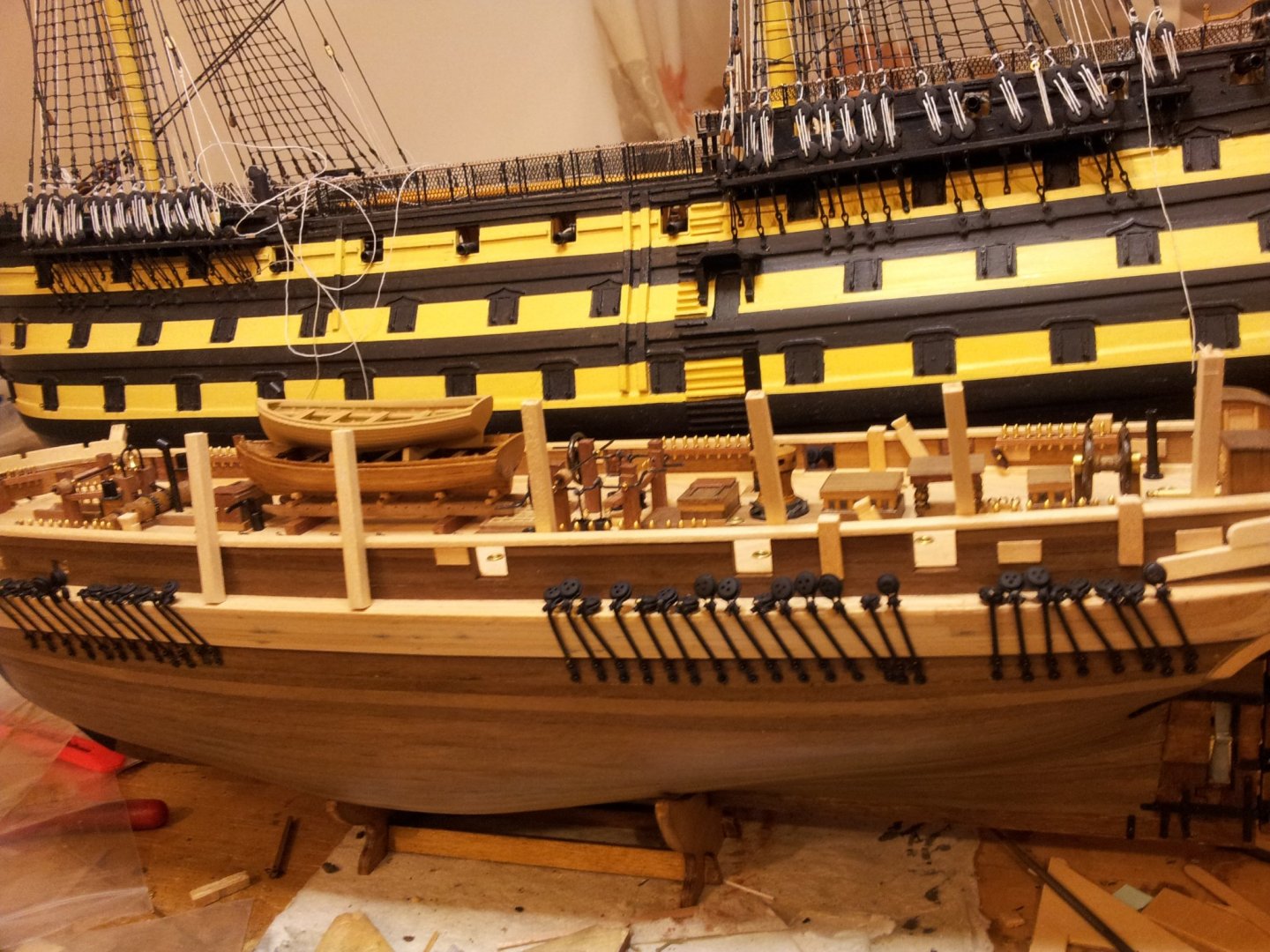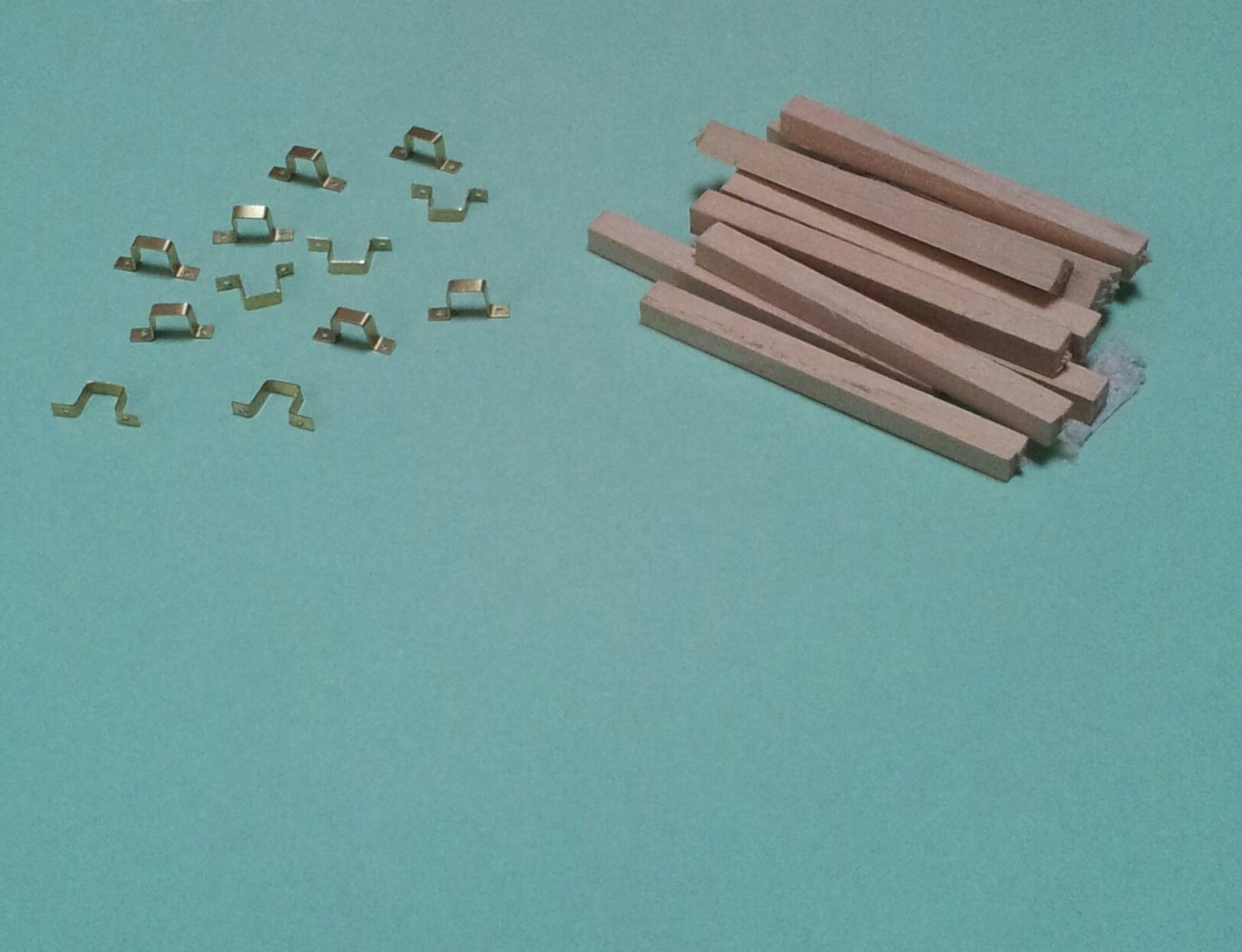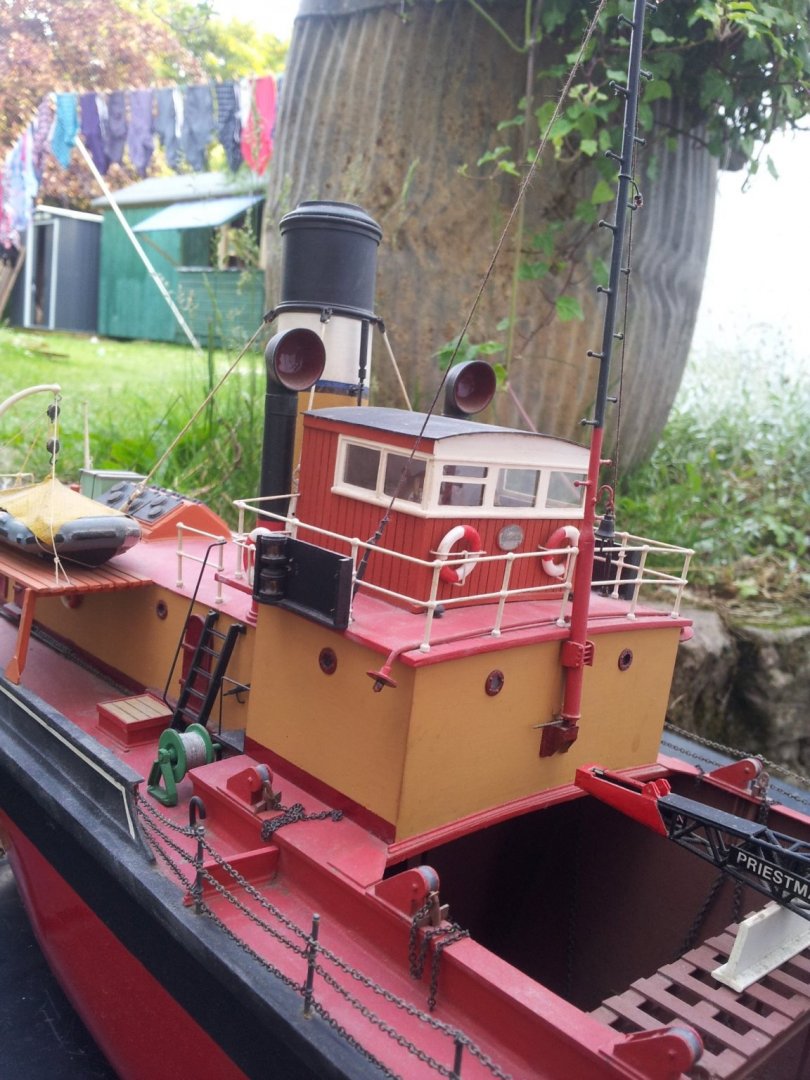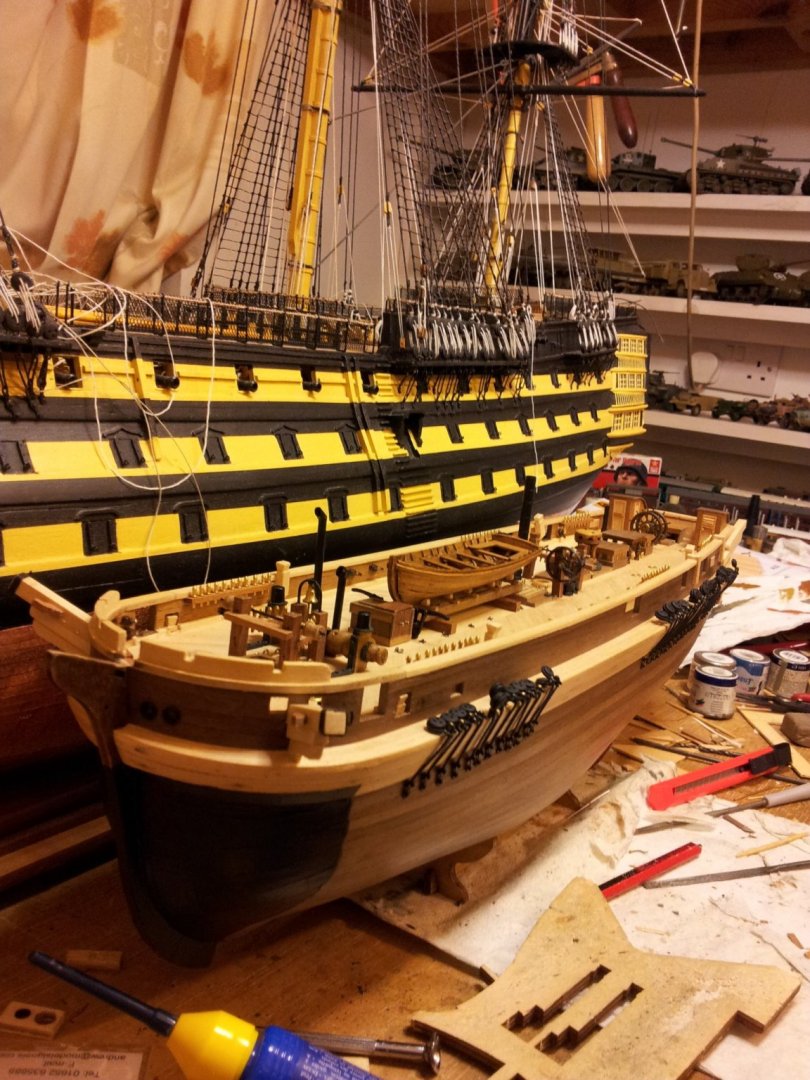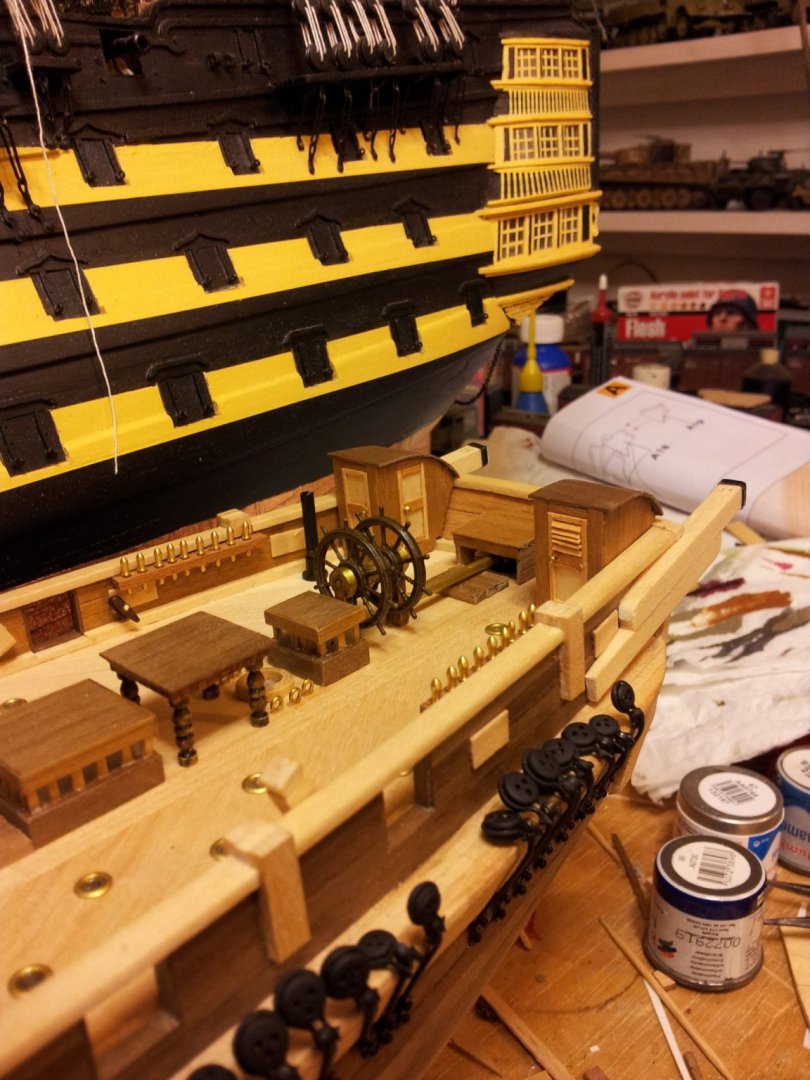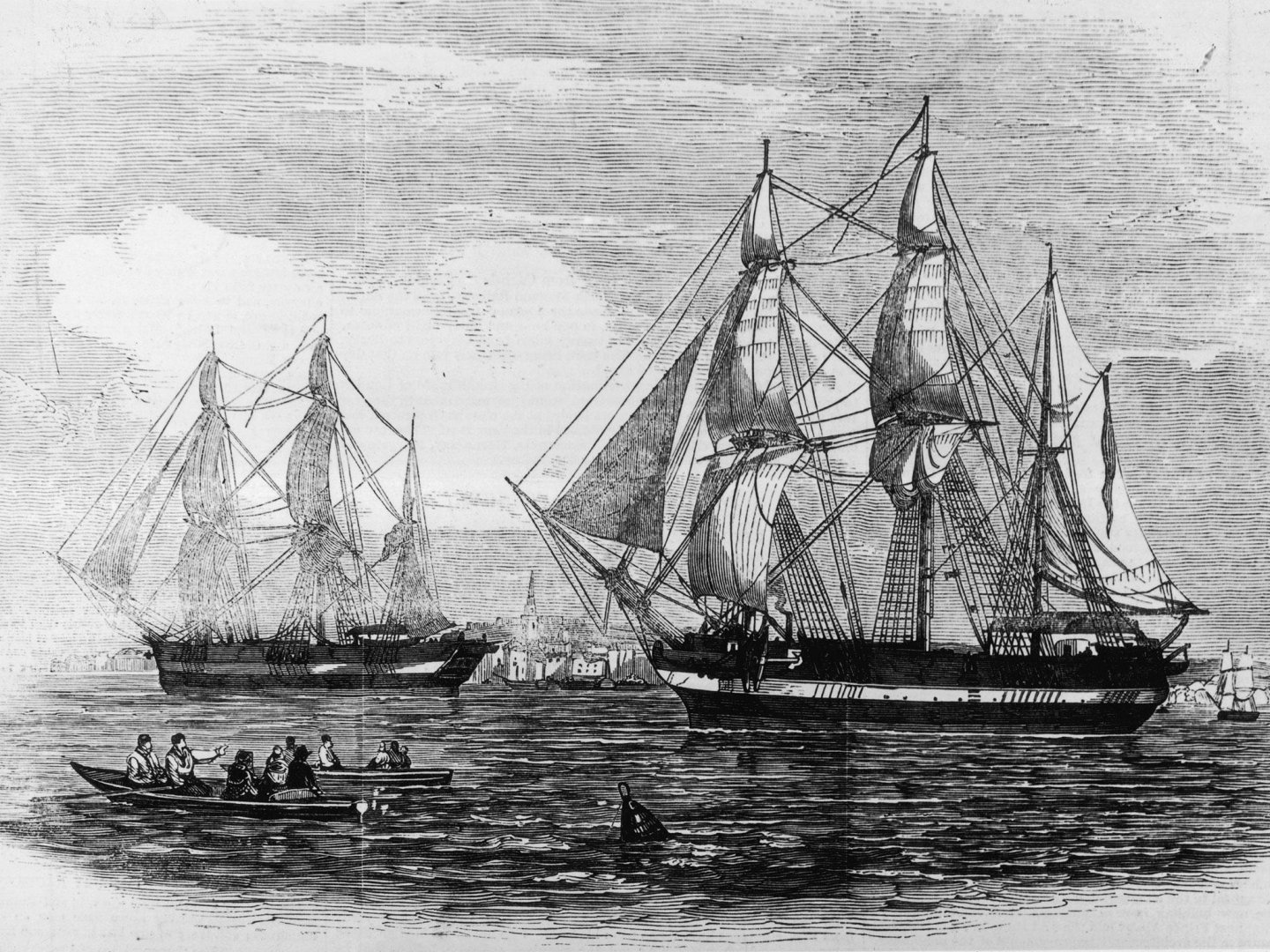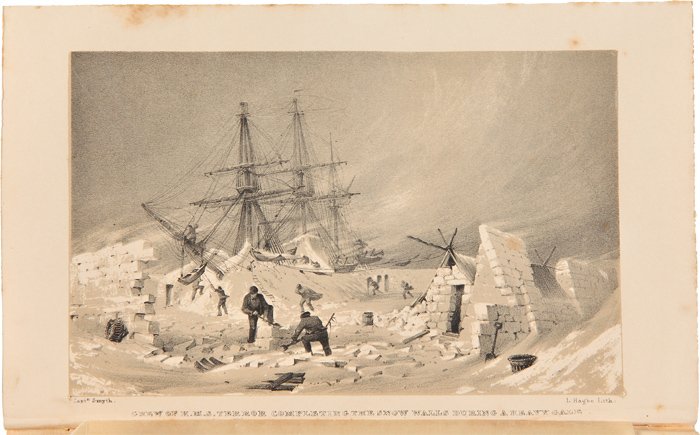-
Posts
2,228 -
Joined
-
Last visited
Content Type
Profiles
Forums
Gallery
Events
Everything posted by clearway
-
gets better n better , also at 1/72 scale you should be able to replace the plastic yards and masts with wood which will be a lot less "bendy" (i have this one in my stash and am still thinking about it). Keith
-
ahhh but don't forget keith the bulwarks will be lined with spare spars and barrells so all is not lost😉. Looking good so far Daniel. Keith
-
thanks for looking in folks, it's Autumn/Winter in Cumbria and every river from West Cumbria up to Dumfries and galloway in the Scottish borders is on flood alert! On terror the stanchions for the spare spars have been painted ready for installing (been working on other models for a break). Take care all. Keith
-
i have said this already but definitely booking you in for some serious therapy🤪😁. Keith
- 312 replies
-
- enterprise
- caf
-
(and 1 more)
Tagged with:
-
I hear you there Keith, but we can be happy that we got it as right as we could and corrected as many of occres mishaps as possible, One thing that did confuse me was that if you look at the midship section it looks like the spigots on the bottom of the davit posts fasten to the stanchions for the spare spars even though they don't come close to each other (probably just a perspective thing). We do know that we have got the windlass about right and the massey pumps look better our way and we have added the flywheels, and not forgetting the 10 spoke ships wheels. I think we are fairly close to what she looked like to be honest short of waiting for matthews book and scratchbuilding.😉 i did notice on Matthews plans he stopped the stanchions at the entryway but he had 5 on one side, i will stick with 4. Keith
-
Hi Keith- for the outboard davit posts i was thinking maybe an iron ring/ eye for resting the davit spigot into, and a U shaped bracket with a retaining pin and a pin for the arm- but still thinking about it hence why only the inboard post brackets have been added. It is looking like they customised things for Erebus and Terror yet again with these! Keith
-
Thanks for likes and looking in everyone, another bit of detail occre missed time again! Was looking at her working out details that need adding before i glue all the deck fittings that are still loose and realised that it would be better to fit the stanchions for holding the spare spars/ oars etc amidships first. On the earlier Antarctic expedition plans for Erebus/ Terror shows 4 per side starting abreast of the forward hatch down till about half way along the pin rail for the mainmast. That was awfully close to the funnel for the steam engine so i thought stay with 4 but finish them just short of the midships entryway, used billings chainplates soldered to some etched handrail stanchions left over from Victory. Also got the yellow wash and some oak stain/ varnish on the resin ships boat. Take care all Keith
-
Regards the tiger kevin all the detail is included with the kit so i just went with it, i will leave all the hatches open so you will be able to get cheeky glimpses of some of it at least. I am also building the takom jagdpanther G2 but didn't bother with the maybach engine on that one! Keith
- 312 replies
-
- enterprise
- caf
-
(and 1 more)
Tagged with:
-
here you go Kevin, unfortunately the top of the hull is glued on but trust me everything is in there!!!! keith
- 312 replies
-
- enterprise
- caf
-
(and 1 more)
Tagged with:
-
will look great 😉 i feel your pain though, i am building the takom 1/35 king tiger with full interior (oh boy it is a full interior!) and lo and behold unless you cut big chunks out of it all that lovely detail is invisible! Keith
- 312 replies
-
- enterprise
- caf
-
(and 1 more)
Tagged with:
-
Thanks for looking in everyone. Back in the shipyard and work continues on the brackets for the davits that are mounted from midships aft (the middle set will have the boat skids on them). At the moment they are just tacked to the capping rail with superglue gel, will drill through and pin at a later date. Also made the saddle on the bowsprit for the jib boom heel. next will have to shape the posts and make the crutches/ pins to anchor them to the deck. take care all. Keith
-
Thankyou for likes and comments and glad you like her jonathan, It certainly shows the barren conditions them guys wintered in Emmet brrrrrrrrrr! Keith
-
I have the HMS Beagle kit and the cannon are stored lashed against the bulwarks so that is one option, However on the Blackwall frigates belonging to the East India Company they would store the guns below decks as extra ballast! There are plenty of build logs on here showing cannons being modelled so plenty of reference material Daniel. The other Keith😁
-
Guy folks night and sounds like a battlefield! It's alter the Occre instructions time again! First i have given one of the quaycraft resin boats i bought a while back a coat of white primer then desert yellow which will be followed by a yellow filter and varnish. Also cut some square 4mm stock into 50mm lengths for the davit posts , and using some 2mm wide brass strip made the square brackets to hold them against the bulwarks. Placed the posts along the bulwarks in their approximate positions to get a feel of how they will look. Take care all Keith
-
its a colour used for ships especially steam ships, here is a pic of a ship i am building with the superstructure painted in the same colour. keith
-
Thanks for views,likes and comments as always folks, sanded back the deckhouse roofs, added door knobs using brass planking pins and gave a coat of matt acrylic varnish (will need another coat). take care all Keith
-
if i had painted mine i would have done the bulwarks in humbrol matt 63 sand, regards the cannons i can't decide whether to include them or not🤔. Keith
-
Certainly makes her look like she has seen some hard work😀- i would maybe give the plating another coat ? Keith
-
i see what you mean Keith, HMS beagle had gaffs rigged on all masts. I was basing my rig on this image from the start of the voyage so maybe it is a bit of artistic license on part of the artist in the above pic? the enigma and conundrum continues! Keith
About us
Modelshipworld - Advancing Ship Modeling through Research
SSL Secured
Your security is important for us so this Website is SSL-Secured
NRG Mailing Address
Nautical Research Guild
237 South Lincoln Street
Westmont IL, 60559-1917
Model Ship World ® and the MSW logo are Registered Trademarks, and belong to the Nautical Research Guild (United States Patent and Trademark Office: No. 6,929,264 & No. 6,929,274, registered Dec. 20, 2022)
Helpful Links
About the NRG
If you enjoy building ship models that are historically accurate as well as beautiful, then The Nautical Research Guild (NRG) is just right for you.
The Guild is a non-profit educational organization whose mission is to “Advance Ship Modeling Through Research”. We provide support to our members in their efforts to raise the quality of their model ships.
The Nautical Research Guild has published our world-renowned quarterly magazine, The Nautical Research Journal, since 1955. The pages of the Journal are full of articles by accomplished ship modelers who show you how they create those exquisite details on their models, and by maritime historians who show you the correct details to build. The Journal is available in both print and digital editions. Go to the NRG web site (www.thenrg.org) to download a complimentary digital copy of the Journal. The NRG also publishes plan sets, books and compilations of back issues of the Journal and the former Ships in Scale and Model Ship Builder magazines.


